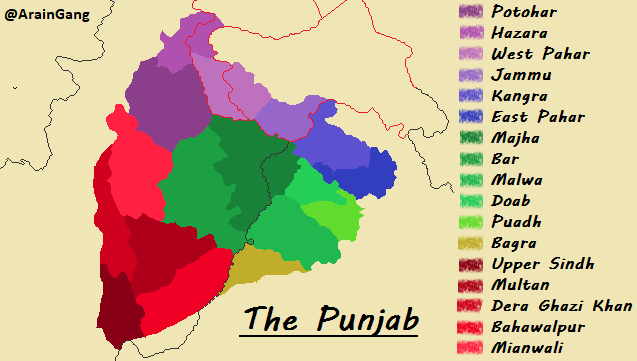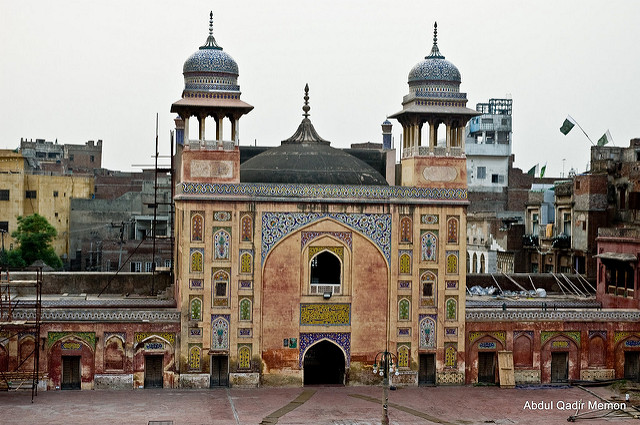Recently I have had the fortune to work on a project to compile a list of Punjabi Muslims in Mughal nobility. Aiming to add more as I research the latter era of the Empire. Hope these become future Wikipedia entries. In no particular order:
- Sadullah Khan: Prime Minister of Shah Jahan for ten years.
- Luftullah Khan: son of Sadullah Khan, awarded nobility rank at 11.
- Daulat Khan Mayi: A Bhatti who was a commander of 1500 men under Shah Jahan.

Credit: @Mughal_imperial
- Shahbaz Khan Kambo: He was Mir Bakhshi of Akbar, which is a position that was responsible for all matters related to the army be it promotions, demotions, salaries, but had influence in all departments due to the fact the person holding this office was part of the Emperor’s inner circle. Shahbaz Khan Kamboh was a Kambo from Lahore, but origins in either Phillaur (Jallandhar) or Ambala, which just 100 years ago was a Punjabi speaking city according to an 1883 census in Gazetteer of Amabala district. Shahbaz Khan’s career started out as a Kotewal or head of a Qila and the way he performed his duties caught Akbar’s eye which is how he rose so high in Mughal service. He took part in some of the most important campaigns during Akbar’s reign in places like Bihar, Bengal and Rajasthan. A religious man, he was one of two nobles to openly criticize Emperor Akbar openly in his darbaar over his Din e Elahi. He observed five prayers and was never seen without a tasbih. Every Thursday he would donate 100 Ashrafi in name of Shaykh Abdul Qadir Gilani.
- Karamullah Kambo: Brother of Shahbaz Khan Kambo

Credit: Wikipedia
- Muhammad Saleh Kambo: from Lahore also known as Muhammad Saleh Kambo Lahori was calligrapher, a court historian and an author of Amal-i-Salah or Shah Jahannama. Saleh Kambo mosque in Lahore is built by him and he was Diwan (finance minister) of Lahore suba. He was also a tutor of future emperor Aurangzeb. Being a Lahori Kambo, possibly descendant to Shahbaz Khan Kambo , but I can not establish the connection. A commander of 5000 soldiers as Mughal noble.
- Shaykh Inayatullah Khan Kambo: Brother of Saleh Lahori who had renounced worldly affairs.
- Ranbaz Khan Kambo: son of Shahbaz Khan was a noble with Shahjahan, commander of 400.
- Ilhamullah Kambo: another son of Shahbaz Khan.

- Kamal Khan Gakhar: Son of Sultan Sarang Khan. He became an officer under Akbar. He put down Miyanah Afghan rebellion in 3rd year of Akbar’s reign for which he received Karr and Fatehpur Hanswa town of Uttar Pradesh as reward. In the 6th year of Akbar’s reign, Kamal Khan brought a force to assist in the campaign against Mubarik Khan Adli’s son who was propped up by Afghans. Kamal’s performance then lead Akbar to ask to give him whatever he desired. Kamal Khan for the love of his native land would ask to be given back Gakhar territories which his uncle had took over during the Suri turmoil. Akbar ordered to divide Gakhar territory in to two portions, one for Sultan Adam Khan and other for Kamal Khan Gakhar. Sultan Adam & his son Lashkari would disobey the Mughal order and Kamal Khan would enter Gahar territory along with Mughal officers and a great battle fought in Hilan. Gakhar territories were never been truly been subdued in the past, so it took a Gakhar to do that. Lashkari was executed and Sultan Adam a prisoner until his death. Kamal Khan himself passed away in 1562-1563. He was commander of 5000, the highest rank.
- Murad Qult Sultan Gakhar: commander of 1500.
- Isa Khan Manj: Mansab of 5000, established his own principality, responsible for killing Emperor Azam Shah and bringing Bahadur Shah 1 to power and defeating Sikhs in Hoshiarpur.
- Sultan Adam Khan Gakhar: Uncle of Kamal Khan and also part of Mughal imperial service under Emperor Akbar.
- Jalal Khan Gakhar: grandson of Sultan Adam Khan, commander of 1500
- Mubarak Khan Gakhar: son of Kamal Khan Gakhar
- Said Khan Gakhar: commander of 1500
- Nazar Khan Gakhar: son of Said Khan, commander of 500.
- Dina Arain: or Adina Beg was last Mughal governor of Punjab. His career started out as a domestic servant but later on he not only became a Mughal governor, but went on to rule Lahore, Multan and Thatta soobas where he got to appoint his own subedars. Syed Muhammad Latif in History of Punjab ““The Sikhs he amused, the Delhi Court (Mughals) he despised, the Afghans (Durranis) he bewildered and the Marathas he effectually influenced in his favour to break the power of both the Sikhs and the Afghans and to obtain his own independence”. He was the first son of soil to have any kind of sovereignty on entire Punjab and raised an army of almost exclusively Punjabi Muslims.

Photo Credit: https://www.thefridaytimes.com/how-a-son-of-the-soil-finally-came-to-power-in-punjab/
- Wazir Khan, Hakim Alim Ud- Din: Historian Syed Muhammad Latif in Lahore: Its History, Architectural Remains and Antiquities identifies him as son of Sheikh Hisam-ud-Din, a native of Chiniot (Jhang district). While it is difficult to establish how long the family were settled in Punjab it is obvious he was there for 3 generations at least given his father is also described as a native. He entered Mughal service while Shah Jahan was still a prince and later became Royal physician along with Viceroy of Punjab and later of Agra. The latter only lasted for 10 months. He also built the famous Wazir Khan Mosque in Lahore.

Photo Credit: http://aroundpakistan.com/wazir-khan-mosque-a-proud-mughal-mosque-in-the-persian-style/
- Salah Khan: Mir Tuzuk under Aurangzeb and son of Wazir Khan


[…] project I work on from time to time is compiling a list of Punjabi Muslims in Mughal Nobility. I also previously wrote about Shahbaz Khan Kamboh. However, recently I had the fortune of coming […]
LikeLike
[…] it is pertinent to mention that Punjabi Muslims had excelled during their tenure holding nobility ranks all the way up Grand Vizier of the […]
LikeLike
[…] is a list I combined of Punjabi Muslim nobles, it isn’t extensive, but that is because I haven’t revisited this, but its all sourced from […]
LikeLike